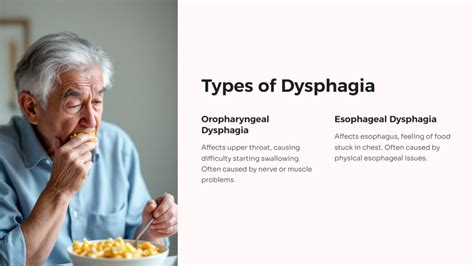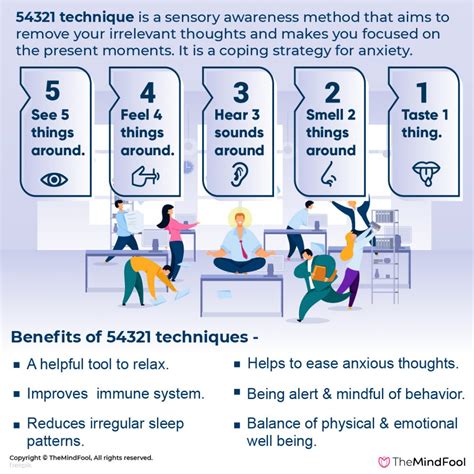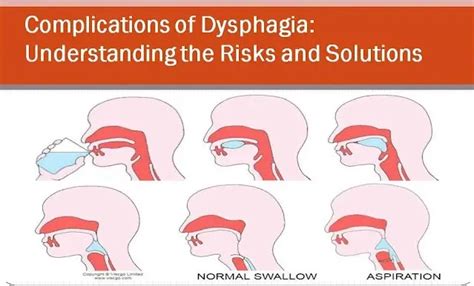Intro
Discover 5 ways to ease swallowing difficulties, including dysphagia remedies, throat relaxation techniques, and dietary changes to alleviate swallowing pain and discomfort, improving overall swallowing health and digestion.
Swallowing difficulties, also known as dysphagia, can be a challenging and frustrating condition to deal with. It can lead to malnutrition, dehydration, and even pneumonia if not properly managed. However, there are several ways to ease swallowing and make mealtime more enjoyable and safe. In this article, we will explore the importance of addressing swallowing difficulties and provide practical tips and strategies to help individuals with dysphagia.
Dysphagia can be caused by a variety of factors, including neurological disorders, stroke, cancer, and aging. It can also be a symptom of an underlying condition, such as gastroesophageal reflux disease (GERD) or esophagitis. Regardless of the cause, dysphagia can significantly impact an individual's quality of life, making it essential to seek medical attention if symptoms persist. With the right treatment and management, individuals with dysphagia can learn to swallow safely and effectively, reducing the risk of complications and improving their overall health.
The importance of addressing swallowing difficulties cannot be overstated. Dysphagia can lead to serious health consequences, including malnutrition, dehydration, and aspiration pneumonia. Aspiration pneumonia occurs when food or liquids are inhaled into the lungs, causing infection and inflammation. This can be a life-threatening condition, especially in older adults or individuals with compromised immune systems. By learning how to ease swallowing, individuals with dysphagia can reduce their risk of developing these complications and improve their overall health and well-being.
Understanding Dysphagia

Causes of Dysphagia
Dysphagia can be caused by a variety of factors, including: * Neurological disorders, such as Parkinson's disease, multiple sclerosis, and amyotrophic lateral sclerosis (ALS) * Stroke or brain injury * Cancer, such as esophageal or throat cancer * Aging * Gastroesophageal reflux disease (GERD) * Esophagitis * Diverticula or pouches in the esophagus5 Ways to Ease Swallowing

Swallowing Exercises
Swallowing exercises can help strengthen the muscles used for swallowing, improving the ability to swallow safely and effectively. Some examples of swallowing exercises include: * The Mendelsohn maneuver: This exercise involves swallowing and then holding the swallow for a few seconds before releasing. * The supraglottic swallow: This exercise involves swallowing and then holding the breath for a few seconds before releasing. * The effortful swallow: This exercise involves swallowing with extra effort, using the muscles in the throat and mouth to push food and liquids down.Treatment Options for Dysphagia

Dietary Changes for Dysphagia
Dietary changes can help reduce symptoms of dysphagia, making it easier to swallow and reducing the risk of complications. Some examples of dietary changes include: * Eating smaller, more frequent meals * Avoiding foods that are difficult to swallow, such as dry or sticky foods * Using thickening agents to make liquids easier to swallow * Avoiding carbonated beverages, which can make swallowing more difficultComplications of Dysphagia

Preventing Complications of Dysphagia
Preventing complications of dysphagia requires a comprehensive treatment plan that addresses the underlying cause of dysphagia and reduces symptoms. Some examples of ways to prevent complications include: * Eating smaller, more frequent meals * Avoiding foods that are difficult to swallow * Using thickening agents to make liquids easier to swallow * Seeking medical attention if symptoms persist or worsenLiving with Dysphagia

Coping with Emotions
Coping with emotions is an essential part of living with dysphagia. Dysphagia can be frustrating and embarrassing, leading to feelings of anxiety, depression, and isolation. Seeking support from family and friends, as well as joining a support group, can help individuals with dysphagia cope with emotions and improve their overall well-being.Conclusion and Next Steps

We hope this article has provided you with valuable information and insights on how to ease swallowing and manage dysphagia. If you have any questions or comments, please feel free to share them below. Your feedback is important to us, and we look forward to hearing from you.
What is dysphagia?
+Dysphagia is a condition characterized by difficulty swallowing, which can lead to malnutrition, dehydration, and aspiration pneumonia if not properly managed.
What are the causes of dysphagia?
+Dysphagia can be caused by a variety of factors, including neurological disorders, stroke, cancer, aging, and gastroesophageal reflux disease (GERD).
How can I ease swallowing?
+There are several ways to ease swallowing, including changing eating habits, using thickening agents, trying swallowing exercises, using adaptive utensils, and seeking medical attention if symptoms persist.
